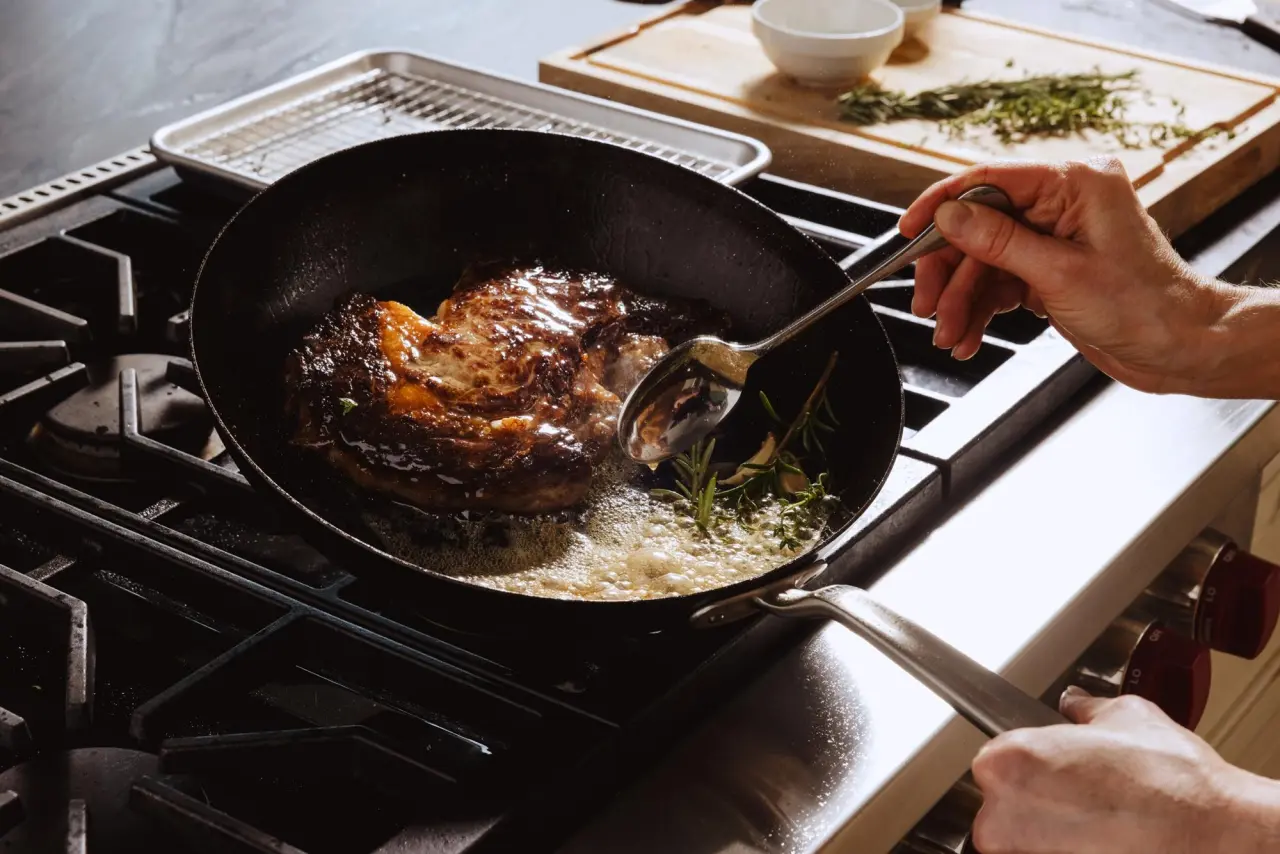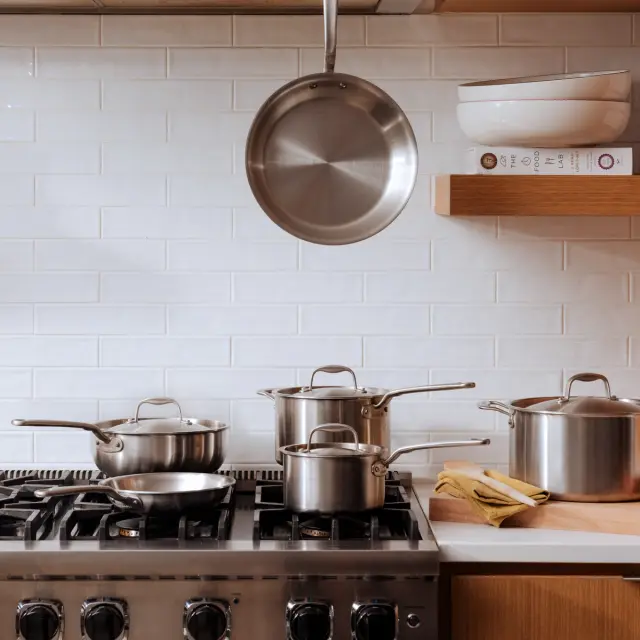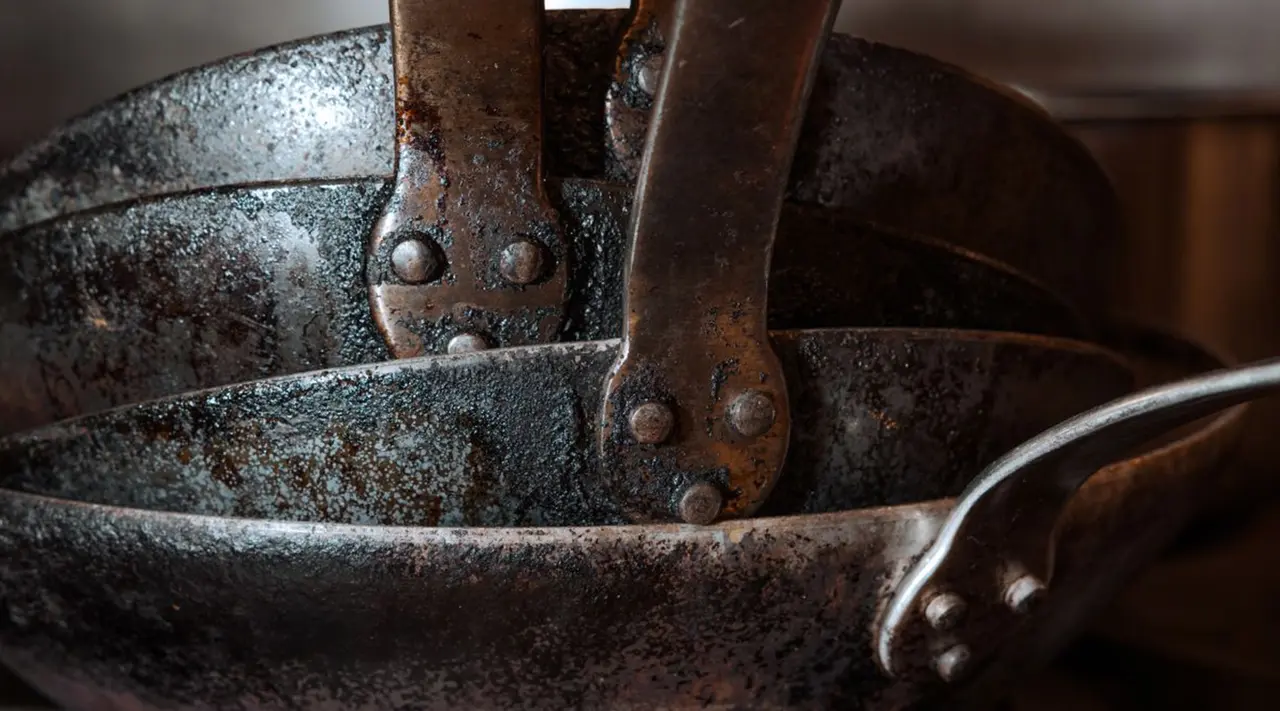Ceramic pans are about as easy to clean as they are to cook with. With their oil- and water-repellant non stick surface, they typically don’t require much more than a quick scrub and wipe dry. Yet just because it’s relatively effortless to maintain, that doesn’t mean you should neglect your pan—at least, if you want it to last a long time. Pay attention to these simple rules for cleaning and caring for ceramic cookware, and your effort will pay off in spades (i.e., perfect scrambled eggs and grilled cheese sandwiches).
Understanding Ceramic Pans
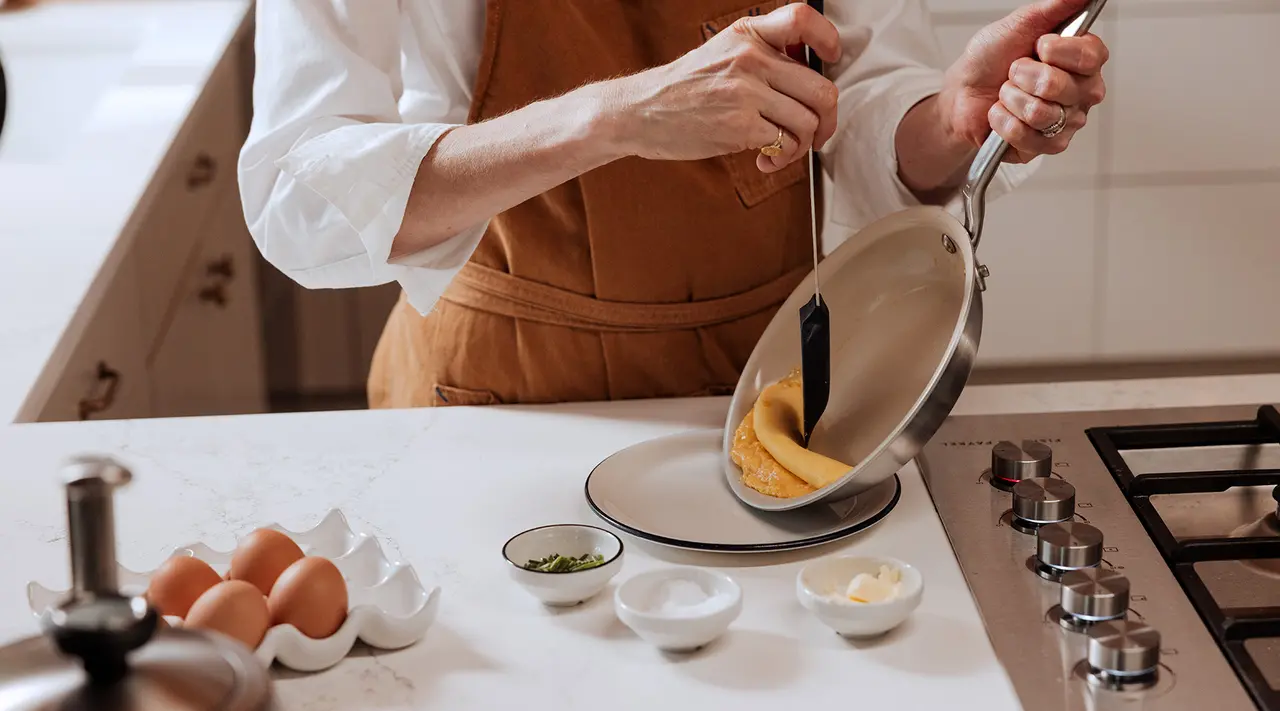
Ceramic non stick pans work by releasing a small amount of their coating every time they’re heated, which prevents food from sticking. While this coating isn’t quite the same as the type used in conventional, coated non stick cookware, it’s still just as prone to scratches and other forms of permanent damage as traditional non stick. That’s a very good reason to be gentle when cooking with and cleaning it.
How to Clean Ceramic Pans: Daily Cleaning Routine
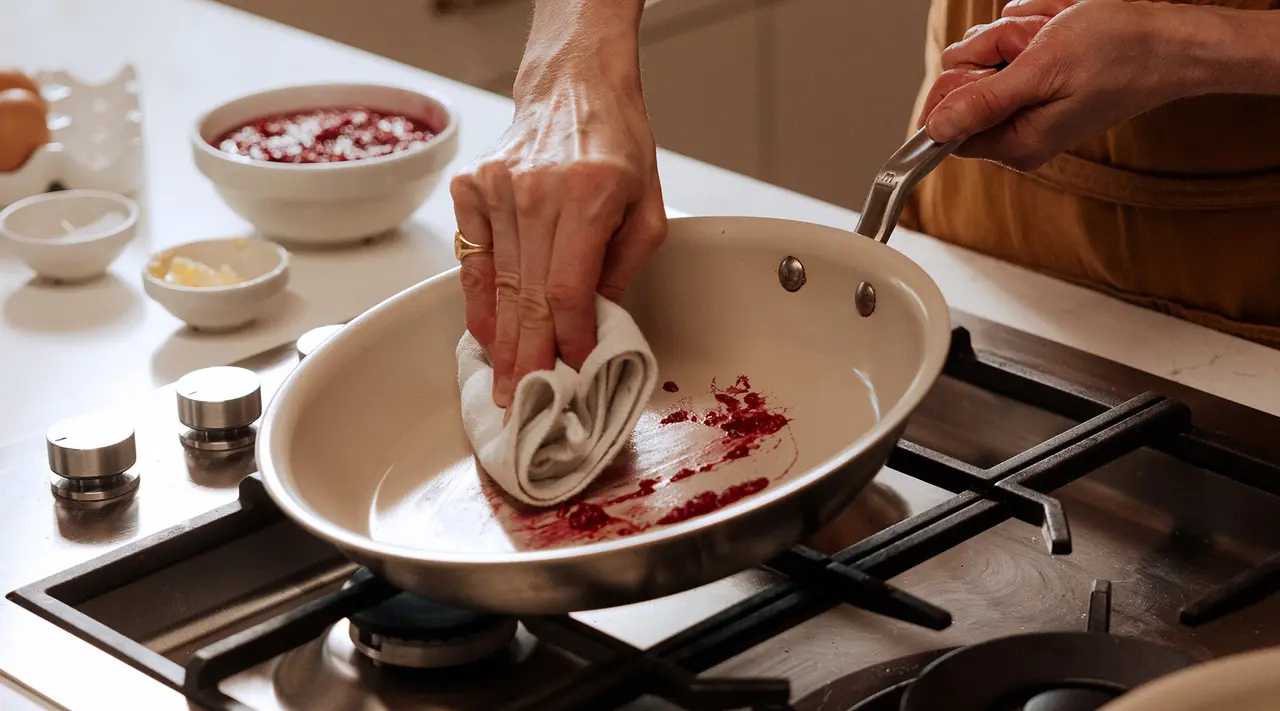
Ceramic cookware is astoundingly easy to clean—it can even be simply wiped clean with a paper or dish towel if you're cooking something else right after. For daily cleaning and care, follow this simple, step-by-step guide.
Step 1: Let Your Pan Cool Down
Sudden temperature changes—like taking your pan from a burner to running it under cold water—could cause the coating to crack and potentially warp the metal base. To combat this, give your pan ample time to completely cool down before running it under the tap.
Step 2: Lather Up and Rinse
Using a gentle dish soap or CeramiClad™ Cleaner and sponge (not a scouring pad, steel wool, or other abrasive cleaning tool), give the inside and the outside of your pan a thorough scrub. Never use the dishwasher—we’ll go over this in more detail later, but the dishwasher is just as bad for your ceramic cookware as it is for traditional non stick (and really, any cookware).
Rinse thoroughly, then dry with a soft dish cloth or paper towel before hanging or stacking.
Other Cleaning Tips
- Never use cooking sprays—e.g. PAM—when cooking with ceramic; these contain chemicals like lecithin and dimethyl silicone, which can easily build up and become very difficult to remove without damaging the non stick ceramic finish.
- Clean your pan immediately after it cools down, as any stuck-on food or burnt oil will only get harder to clean as the pan sits.
- Make sure to regularly clean the exterior and bottom of your pan, as well as any rivets.
Deep Cleaning Techniques
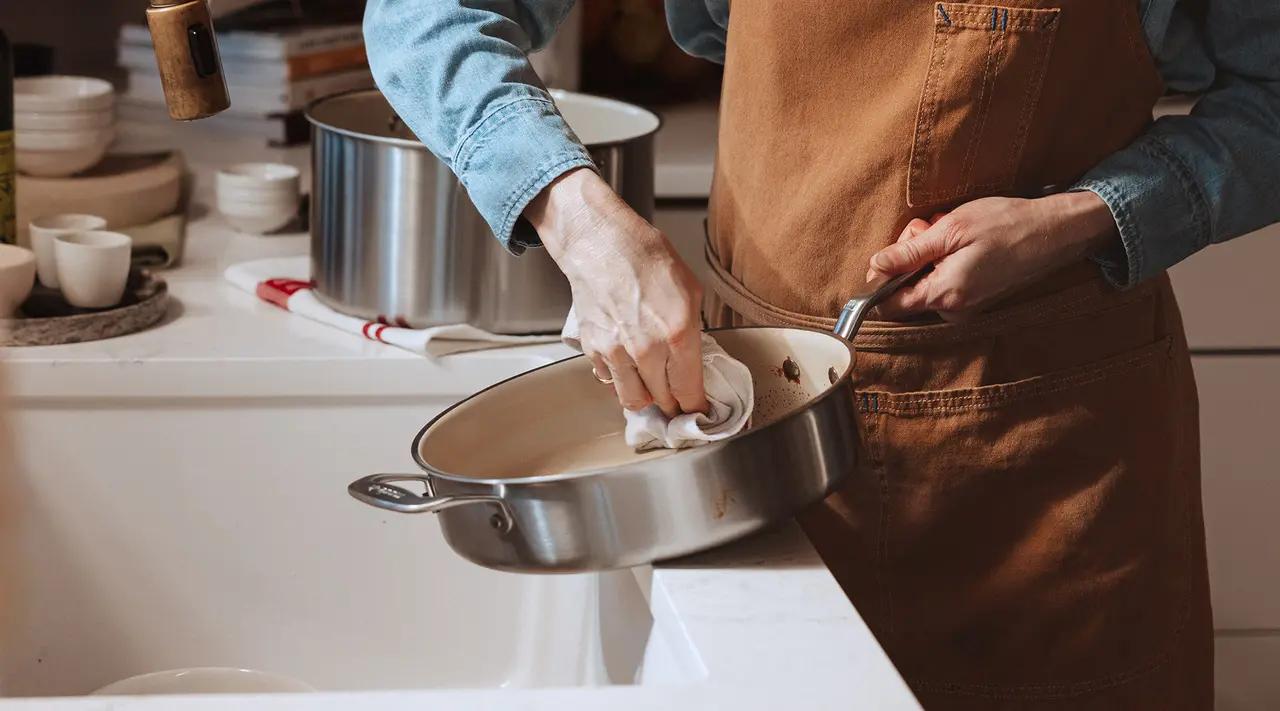
If you’re following our guide and cleaning your ceramic pan after each use, you won’t need to do much heavy duty scouring. Occasionally, however, you may need to get a little more aggressive—especially if you’ve got stains or burnt-on residue that just won’t budge. Here’s how to do that without damaging the coating of your pan.
- Mix together a 1:1 ratio (we suggest roughly 2 tablespoons each) of white vinegar and baking soda, then gently scrub with a sponge or dishcloth to create a paste. For lighter stains or smaller burns, this should do the trick—but if you're working with something more stubborn, progress to the next step.
- Add a few tablespoons of water to the mixture and bring to a simmer over medium-low heat, using a silicone or wooden spatula or spoon to gently agitate until baking soda is dissolved. Allow the mixture to simmer until you’ve managed to loosen any residue.
- Once the residue is loosened, let the pan cool completely. Discard the mixture and rinse the pan out with warm water, then wash with warm soapy water as per standard care instructions before drying.
Do's and Don'ts of Cleaning Ceramic Pans
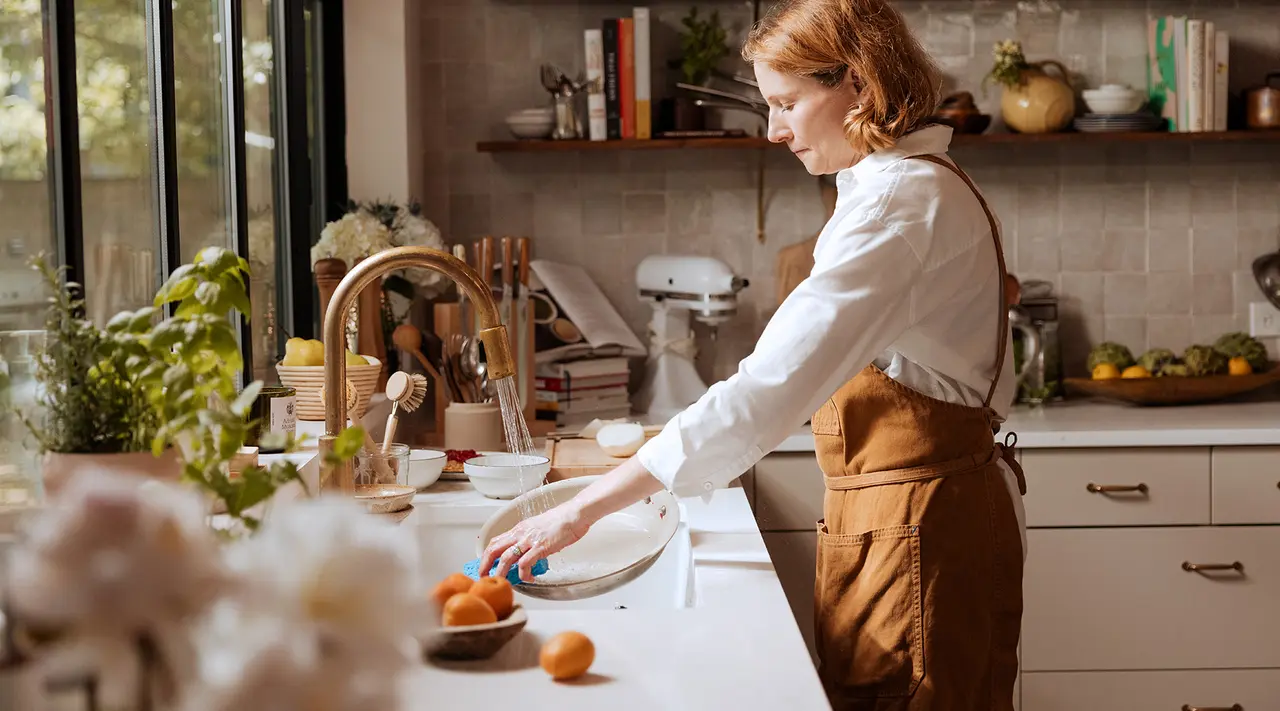
At a glance, these tips will keep you and your ceramic cookware in the clear.
Do:
- Hand-wash only
- Use gentle dish soap for daily cleaning
- Only use soft sponges or dish cloths
- Wait for the pan to cool down before cleaning
Don’t:
- Scrub with steel wool, rough sponges, or other abrasive cleaning tools
- Use harsh cleaning agents, such as detergents containing bleach or citric acid
- Put your pan in the dishwasher—these use extremely hot water and harsh detergents to clean, which will degrade the ceramic coating and cause it to wear out quickly
- Leave the pan to soak for more than a few minutes
- Clean the pan while it is still very hot
Additional Ceramic Maintenance and Care Tips
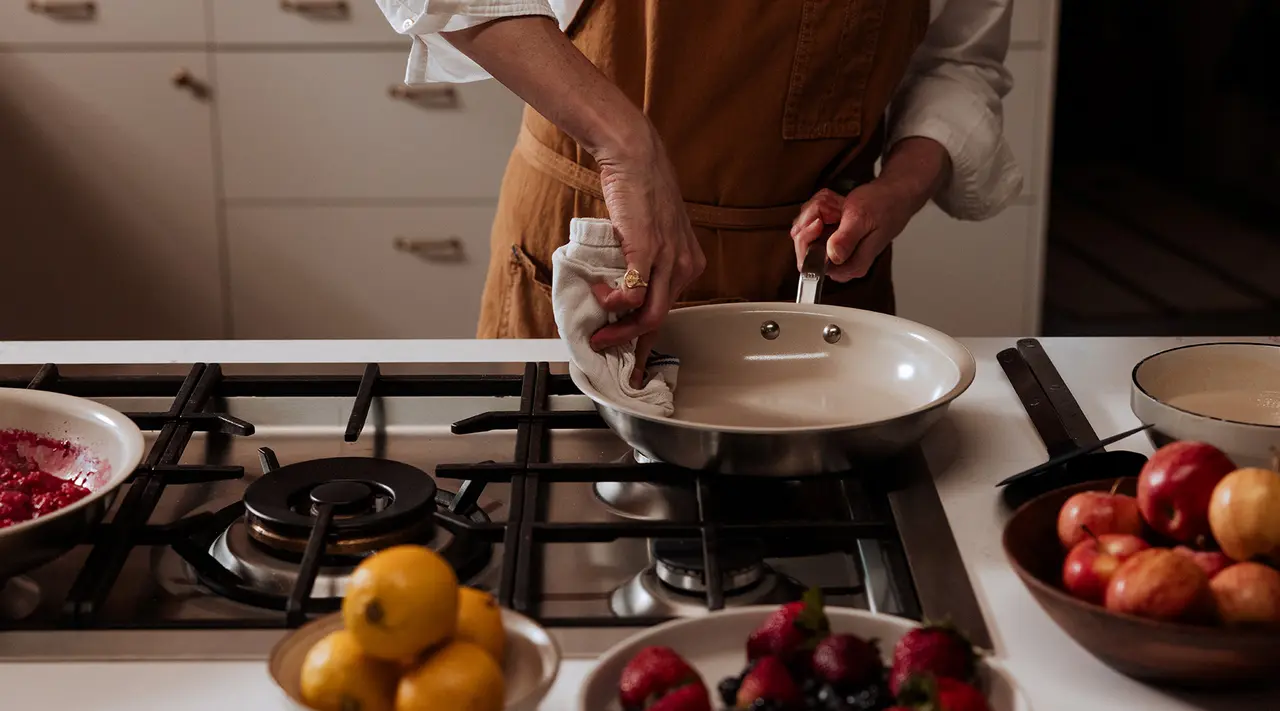
To keep your pan in the best condition possible, you’ll need to keep a few other care aspects in mind.
- Always store your ceramic cookware in a dry, non-humid environment when not in use.
- Store your pans either by stacking—making sure to place a Pan Protector, dish cloth, or trivet between each layer—or by hanging on a rack.
- Try not to leave your pan stacked in the sink with other cookware or utensils, which can chip or scratch the finish if you’re not careful.
- Protect your pan from thermal shock by bringing cold ingredients up to room temperature before adding them to the pan, and by never putting a hot pan directly into the fridge or freezer or a cold pan into the oven.
Ready to Shop?
As long as you’re willing to put in a tiny bit of effort to keep your pan in good shape, there's no reason to avoid more delicate cookware like ceramic. Following these simple tips and using our specialized CeramiClad™ Cleaner will make your life easier—and your cooking taste even better in our CeramiClad™ Collection.
Free from harmful chemicals, CeramiClad™ will change the way you cook at home.






